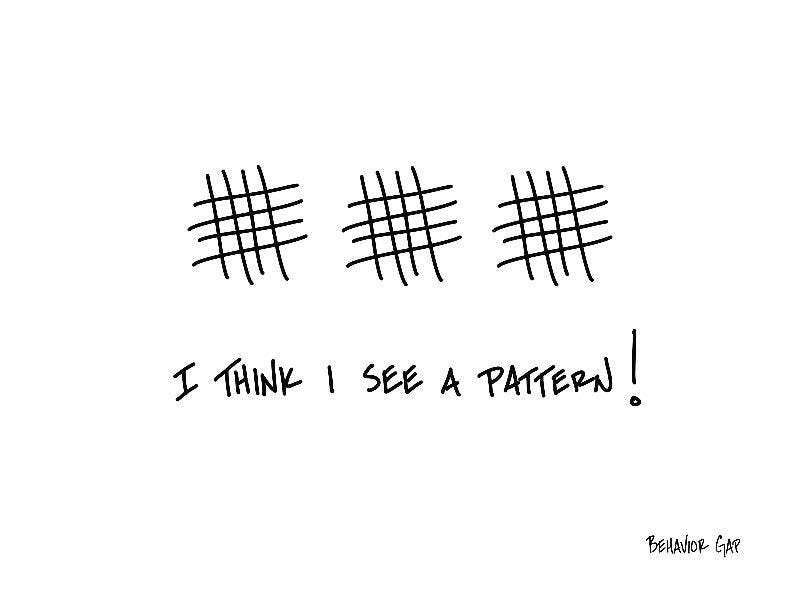
Carl Richards is a Certified Financial Planner™ and creator of the Sketch Guy column, appearing weekly in The New York Times since 2010. The following article is reproduced with permission from his weekly newsletter and his website can be found here.
Greetings, Carl here.
Humans are pattern-recognition machines. We see patterns everywhere! In fact, we’re so good at recognizing patterns that we often see them where they don’t even exist.
This shows up frequently anywhere there are big bodies of data. And while well-intentioned, this is one of the big behavioral mistakes we make time and again in personal finance. We look for patterns. And guess what, they absolutely exist, right up until the point where you try to invest your money based on the pattern. Then *Poof!* they vanish into thin air.
One of my favorite examples of this was some research done by David J. Leinweber at Caltech. Apparently, he figured out how to predict the stock market using just three variables:
1- Butter production in the United States and Bangladesh.
2- Sheep populations in the United States and Bangladesh.
3- Cheese production in the United States.
This is amazing! Right?
It turns out these three variables predicted 99% of the stock market’s movement!
#TimeToStartAHedgeFund.
There’s only one problem: The joke’s on us.
In our very human pursuit of patterns, we start seeing things that aren’t really there. We think if something happened a certain way in the past, then it will surely continue into the future. We start to believe—we desperately want to believe—that this pattern will have predictive value.
But it doesn’t. And that’s the thing about most patterns—they don’t predict the future; they just describe the past.
While some of these silly data mining tricks might be interesting to talk about, they don’t actually help us.
Believe me, I’ve gone down the rabbit hole many times. For years, anytime someone approached me with this type of pattern, I would feel like I had found the Dead Sea Scrolls. But each time, the same thing happened. The pattern existed right up until it was time to invest… and then it didn’t.
Now, when people approach me with this research—and it’s always called “research”— promising to show me a new pattern in the data, I come back to them with a magic pattern of my own.
“It turns out,” I tell them, “that the only pattern that will influence your investing success is your behavior.”
- Can you break the pattern of buying high and selling low?
- Can you break the pattern of chasing after the next “big” investment?
- And perhaps most importantly, can you buy low-cost investments in a diversified portfolio based on your values and goals and then simply ignore them?
Now that’s a pattern I can endorse.
-Carl
P.S. If you want to use this sketch, you can buy it here.


